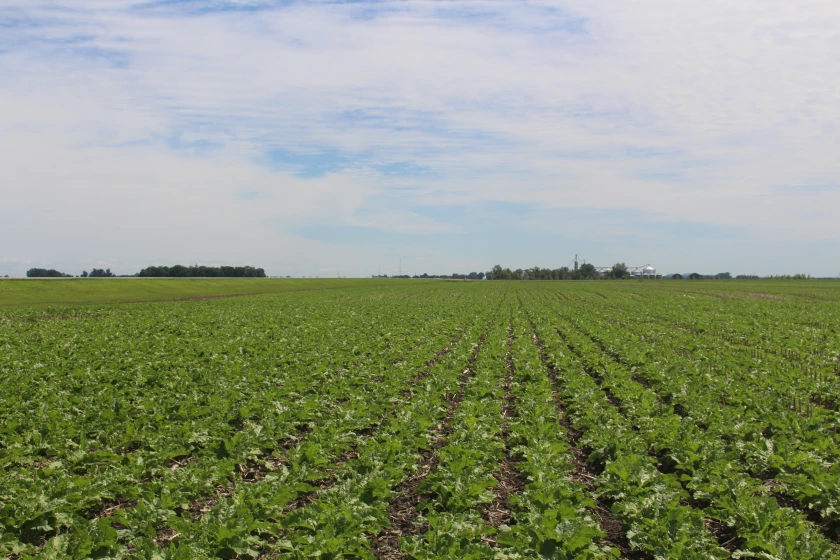Several sugarbeet farmers in northeastern North Dakota are experimenting with strip-till, reduced tillage and planting green through on-farm research trials.
The group participated in a panel discussion about improving soil health on sugarbeet ground in July, according to AgWeek.
Jay and Lee Gudajtes of Minto, N.D., are among the sugarbeet farmers trying out strip-till to improve their soil health and conserve moisture. In 2020, they bought an Environmental Tillage Systems SoilWarrior for $400,000 and started strip-tilling on trial fields. In the first year, they made strips in the fall into wheat stubble and then planted sugarbeets in the strips in spring of 2021.
When fall came around, the Gudajteses strip-tilled into corn residue and planted sugarbeets in spring of 2022. The cold, wet weather this spring delayed planting, as the stubble caught snow and was slow to thaw and dry out. Wet years also make weed control challenging.
“We’re going to continue to refine our efforts, and most likely, with improvements in our efforts, we will expand into additional acres, and if there is a way to utilize this on our whole farm, this is something we will take a look at,” Jay told AgWeek.
Jay says strip-tilling reduced his operation's labor needs and costs, plus saved time and improved yields. The long-term benefits are still yet to be determined, but he says soil health has improved.
Farmers looking to try strip-till should use a similar approach to the Gudajteses, implementing the new practice slowly and on limited acres, rather than taking a whole-farm approach, says Daniel Vagle, factory district agriculturalist at American Crystal Sugar Co. in Drayton, North Dakota. Adapting practices to what works with a particular farmer's operation is key, as strip-till comes with a new set of management responsibilities and equipment costs.
“The management becomes so much more nuanced because you’re adding layers of complexity to the operation,” Vagle says.






